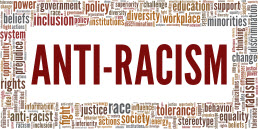
3 Reasons Antiracism Efforts Are Failing At Your Organization
3 Reasons Antiracism Efforts Are Failing At Your Organization https://csuiteold.c-suitenetwork.com/advisors/wp-content/uploads/sites/5/2022/04/antiracism2.jpg 258 129 Omekongo Dibinga https://secure.gravatar.com/avatar/91937cff3e3ae853fbe0c400d04560fe?s=96&d=mm&r=gThe year 2020 has been called the year of America’s racial reckoning by some. It’s been called a time where movements for racial and social justice exploded on the national scene. I have to be honest. I am not convinced. As a student of history, I have learned to analyze the difference between what activist Joe Madison calls a moment versus a movement. Was #metoo a moment or a movement? In my opinion, it has turned out to be a moment in history because I have not seen wholesale systemic change in how women are treated in the workplace beyond certain individuals like Bill Cosby, Harvey Weinstein, and others rightfully having their careers and fame challenged and more or less ended. I feel a similar vibe happening with the work of antiracism.
I have been engaged in so many powerful trainings and talks with organizations on the issue of antiracism, defined by some as “the policy or practice of opposing racism and promoting racial tolerance.” From the human resources to the executive level, I have been truly impressed by the sincerity by which these organizations have taken issues of racial or social justice head-on. Below I am sharing three reasons why the antiracist efforts of your organization may not be working.
- You do not fully understand what antiracism is.
Is antiracism just a word at your company? Are you and your colleagues really learning vocabulary that speaks to the challenges we face today? Can you and your colleagues explain the difference between racism and systemic racism or a microaggression and a stereotype? Words matter. Definitions matter. I have had multiple situations where I had to work with an organization on just agreeing to the same definition of a term like antiracism before we could move on in any other part of the discussion and it was completely worth it because, in times when this was not done, we had to backtrack and start over with definitions.
This is an extremely important step because if I’m looking at systemic racism as “a form of racism that is embedded as a normal practice within society or an organization” and you are looking at racism from the lens of “I never owned slaves so I’m not responsible for racism” or “if you just work hard you can overcome anything” without even acknowledging the “systemic” part of “systemic racism”, any training we do is going to be unintentionally sabotaged from the beginning. Invest the time necessary to get on the same page before you move forward.
- You are too focused on the problem and not the solutions.
Too many organizations have focused their antiracism efforts on reading articles and books and talking about them. This obviously must continue but it cannot be enough. For many nonwhite people, especially black people I have spoken to at some organizations, antiracism training is just the replacement term for diversity training. Saying “Black Lives Matter” is the new version of saying “We value diversity.” Organizations that have been more successful with their antiracism efforts have shown that black salaries matter and black employees matter. In short, they understand that representation matters.
Organizations that have hired more nonwhite people at the executive level, granted more power to their directors of diversity, and have increased representation of nonwhite people across the board are experiencing greater employee satisfaction and are celebrated more by their customers, exemplified by MSNBC naming Rashida Jones as president of the network and introducing more shows hosted by black people such as Tiffany Cross and Johnathan Capehart. It is represented by President-elect Biden not just saying he believed in diversity but making his cabinet more diverse including adding Native American congressperson Deb Haaland to his cabinet as well as appointing the first openly gay cabinet member in Pete Buttigieg.
- Antiracism is a fad at your organization.
I remember during the summer of 2020 seeing “black lives matter” signs going up everywhere from Dell to Starbucks. Even republican senators like Mitt Romney had marched for black lives and verbalized the phrase. Microsoft’s advertising department got in trouble after an email surfaced asking that they paint a #blacklivesmatter mural while the protests were “still relevant.” This led to a powerful response by artist Shantell Martin, who partially wrote that “Education and Accountability must occur in order to see REAL change. Supporting equality only when it’s popular is in itself a form of racism.”
While the aforementioned situation does not represent all of Microsoft, it does express the sentiments that I have seen by some leaders of organizations and companies that see work on antiracism as the flavor of the month. The fact of the matter is that, especially in the age of social media, your company will indeed be exposed positively or negatively. Your organization would actually be better off doing nothing rather than putting forth a half-hearted measure that will create more problems than you are trying to solve. Make sure your efforts are sincere and you are more likely to get buy-in from most parties involved.
Going forward.
At the end of the day, it is important that your organization steps back to truly assess what your goals are when you state that you want to embrace antiracist policies. I have stated before that even though I am an antiracist and committed to the work, I am not a big fan of the word because it literally focuses (by the definition of the word “anti”) on what we are against as opposed to what we are for. It is similar to the late Mother Teresa stating that she would never attend an anti-war rally but would attend a pro-peace rally.
If you really want to assess your antiracist efforts, you should look at what progress your company has made eight months after the killing of George Floyd, which was one of the major catalysts for today’s antiracist efforts along with the killing of Breonna Taylor. In the same way you have not heard their names on television lately due to potential social justice fatigue, is your organization experiencing antiracism fatigue or just not moving forward? The three steps above may help you but only if you and your organization are sincere about the work and honest about exposing the challenges your organization faces in order to make sure that you are part of a movement and not a moment.




